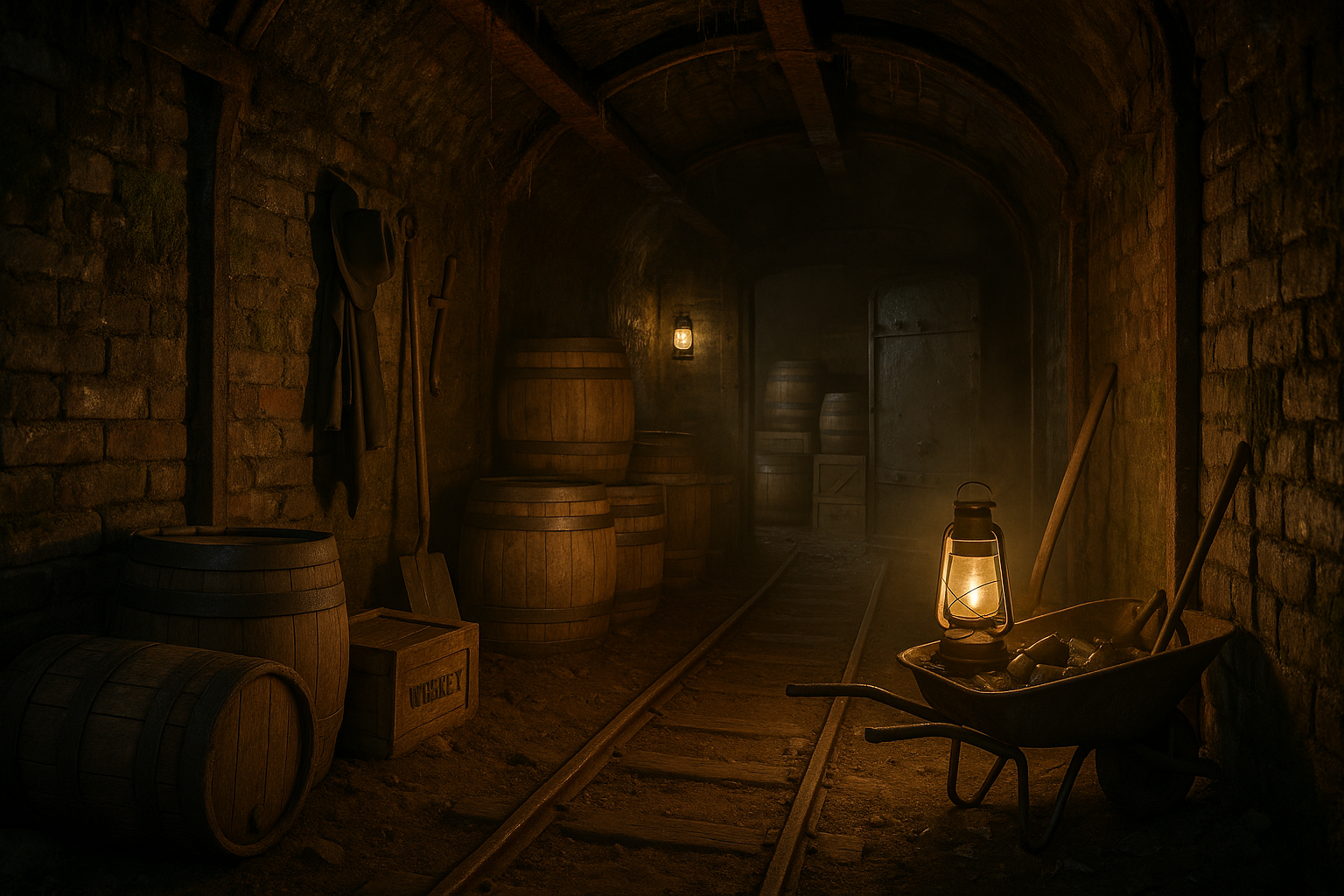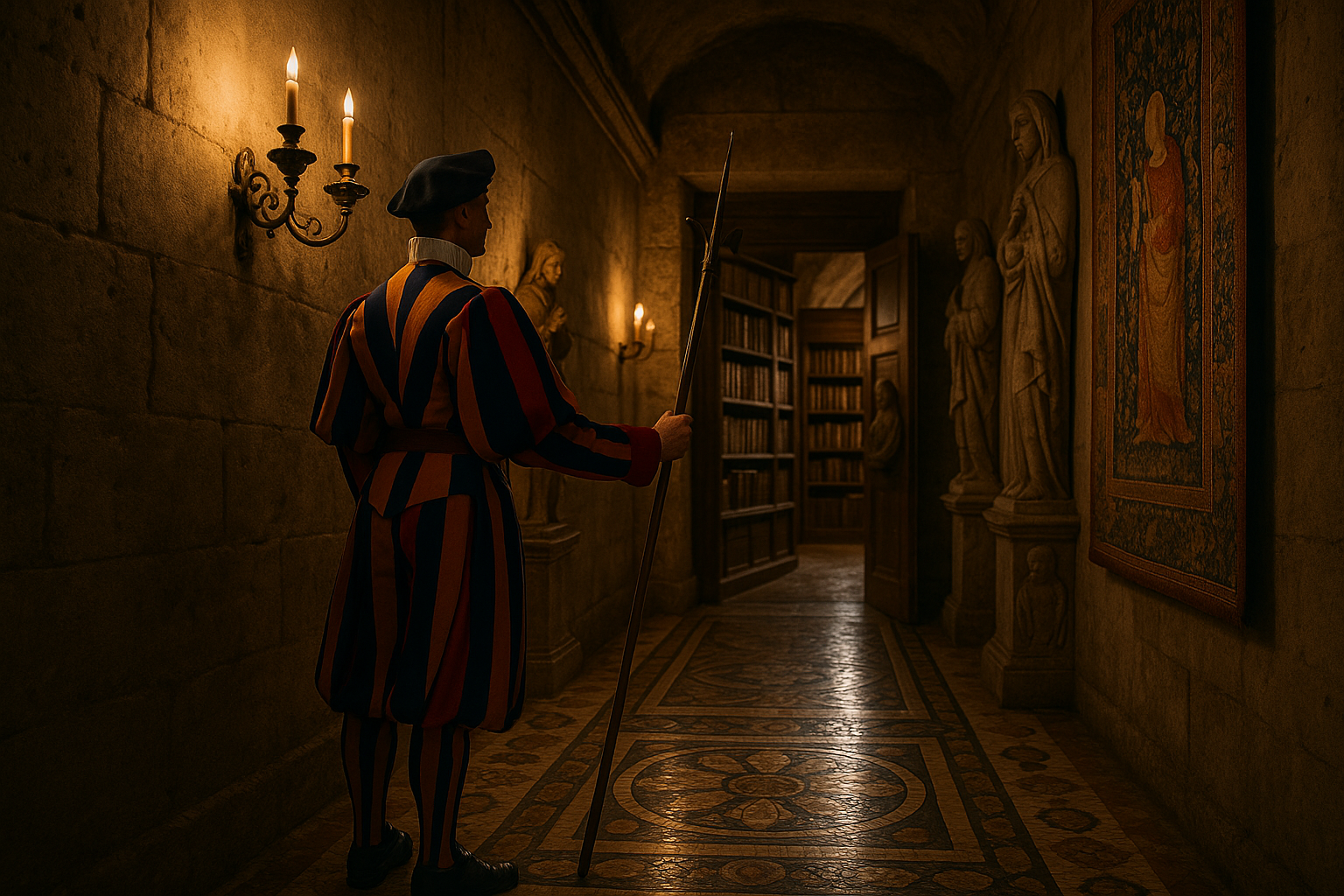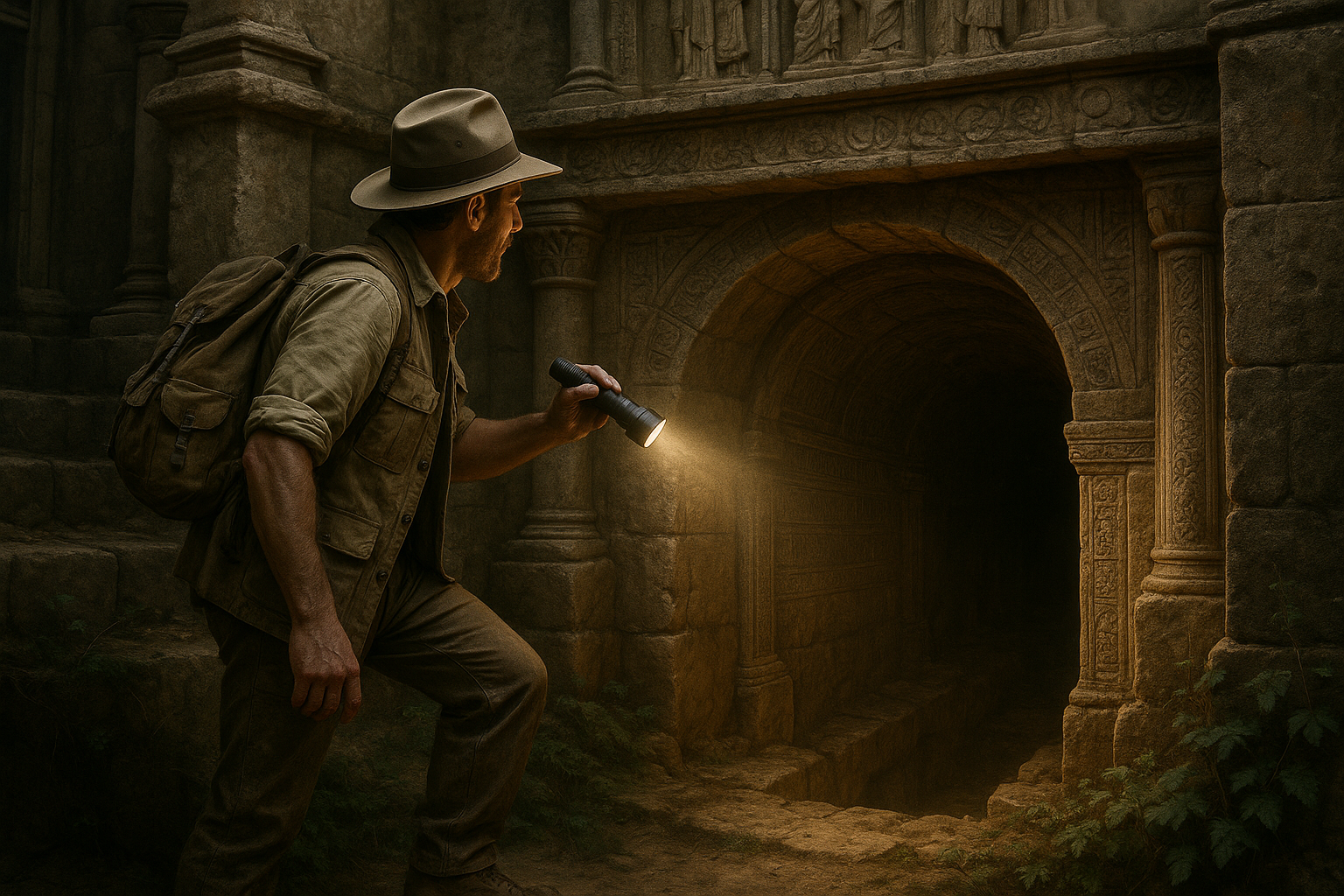In a world where the wonders of architectural prowess are often celebrated above ground, there’s an entire realm of engineering marvels lying beneath our feet, waiting to be discovered. The history of underground fortifications is as old as civilization itself, yet remains shrouded in mystery and intrigue. From ancient catacombs to modern military bunkers, these subterranean structures tell tales of innovation, survival, and resilience. In this exploration of “Uncovering the Secrets: The Innovative Engineering of Underground Fortifications,” we delve into the shadows to shed light on the remarkable feats of engineering that have safeguarded civilizations throughout history.
For centuries, humans have been driven by the need to protect themselves from threats, both real and perceived. This primal instinct has given rise to the construction of underground fortifications that are as diverse as they are ingenious. Imagine the cold, damp corridors of a medieval castle’s dungeons, designed to keep invaders at bay, or the intricate tunnel networks used in the Vietnam War to outmaneuver opponents. Each fortification is a testament to the creativity and resourcefulness of its creators, merging the art of war with the science of construction. These structures are more than just stone and earth; they are a reflection of the times and societies that built them.
The secrets of these underground fortifications lie not just in their construction, but also in their ability to adapt to the changing tides of warfare and technology. As we journey through this fascinating topic, we will uncover the various engineering techniques employed throughout the ages, from the ancient Romans’ use of volcanic ash to create enduring concrete, to the cutting-edge materials and design principles used in modern-day subterranean bunkers. We will also explore the strategic importance of these fortifications, examining how they have been used to protect vital resources, serve as hideouts for resistance movements, and even act as the last line of defense in times of war. 🌍
As we navigate through the labyrinth of underground engineering, you will be introduced to some of the most iconic and lesser-known fortifications across the globe. We’ll travel from the hidden cities of Cappadocia in Turkey to the fortified tunnels of Switzerland, each with its unique story and significance. Along the way, we’ll meet the visionary engineers and architects who dared to defy the conventional and delve into the depths to create these protective havens. So, join us as we unearth the secrets buried beneath our feet and celebrate the extraordinary ingenuity that has kept humanity safe for generations. 🛡️
Introduction to the Marvels of Underground Fortifications
Underground fortifications have fascinated engineers and historians alike for centuries. These hidden marvels of engineering have been used throughout history as defensive structures, secret bunkers, and secure facilities. The complexity and ingenuity involved in designing and constructing these fortifications is nothing short of remarkable. From ancient cave dwellings to modern military bunkers, the evolution of underground structures demonstrates humanity’s continuous quest for security, innovation, and survival.
The concept of using the earth as a protective layer is not new; ancient civilizations such as the Mesopotamians and the Chinese employed underground spaces for various purposes. However, the modern understanding of these fortifications was significantly advanced during the World Wars, where underground bunkers played critical roles in military strategies. The engineering behind these fortifications involves a blend of geology, architecture, and military science, making it a multidisciplinary field that continues to evolve with technological advancements.
The Historical Evolution of Underground Fortifications
Ancient Civilizations and the Birth of Subterranean Engineering
Long before the advent of modern engineering, ancient civilizations understood the strategic advantages of building underground. The Anatolian site of Derinkuyu in present-day Turkey, dating back to 8th century B.C., is one of the earliest known examples of a sophisticated underground city. Carved from volcanic rock, this multi-level complex could shelter up to 20,000 people along with their livestock and food supplies, providing refuge from invaders and harsh climates.
Meanwhile, the ancient Chinese constructed elaborate underground networks, including the famous Terracotta Army pits in Xi’an, which were part of the mausoleum of the first Emperor of China, Qin Shi Huang. These structures served both as protective bunkers and as symbols of power, demonstrating the dual utility of subterranean spaces. The ability to harness natural materials and geological features to create these complex structures showcases the ingenuity of early engineers and their understanding of the earth’s properties.
Medieval Europe: Castles and Hidden Passages
The Middle Ages saw the rise of fortresses and castles across Europe, with many incorporating underground elements such as dungeons, escape tunnels, and storerooms. These subterranean additions provided strategic advantages, allowing defenders to withstand sieges for extended periods. The castle of Predjama in Slovenia is a prime example, boasting a network of hidden passages and caves that served both defensive and logistical purposes.
Medieval engineers faced unique challenges in constructing these underground features. The choice of location was crucial, often dictated by the natural landscape. The use of local materials and traditional building techniques allowed for the integration of these structures into the surrounding environment, enhancing their durability and effectiveness. This period marked a significant advancement in the use of underground spaces, setting the stage for more sophisticated developments in the centuries to come.
The World Wars: A New Era of Bunker Engineering
The First and Second World Wars were pivotal moments in the history of underground fortifications. As warfare technology advanced, so did the need for more resilient and strategically placed bunkers. The Maginot Line in France and the Atlantic Wall constructed by Nazi Germany are two iconic examples of extensive underground military fortifications. These structures were designed to protect against artillery bombardments and air raids, demonstrating a heightened understanding of structural engineering and material science.
Engineering these bunkers involved overcoming numerous challenges, such as soil stability, water infiltration, and ventilation. Innovations in concrete technology and reinforcement techniques allowed for the construction of more robust and durable bunkers, capable of withstanding significant external pressures. The emphasis on camouflage and strategic placement further highlighted the importance of blending engineering with military tactics, ensuring these fortifications served their purpose effectively.
Modern Engineering of Underground Fortifications
Technological Innovations in Subterranean Design
Today’s underground fortifications benefit from cutting-edge technology and advanced engineering methods. The use of computer-aided design (CAD) and geotechnical modeling allows engineers to plan and simulate complex underground structures with precision. Modern materials such as reinforced concrete, steel, and composite materials enhance the strength and longevity of these fortifications, ensuring they can withstand modern warfare’s demands.
One of the most significant advancements in modern underground engineering is the integration of smart technologies. These systems provide real-time monitoring of structural integrity, environmental conditions, and security threats, allowing for proactive maintenance and response. Furthermore, innovations in tunneling and excavation technology have reduced the time and cost involved in constructing these fortifications, making them more accessible for both military and civilian applications.
Challenges in Modern Underground Construction
Despite technological advancements, constructing underground fortifications remains a challenging endeavor. Engineers must carefully consider geological conditions, such as soil type, rock formations, and groundwater levels, which can significantly impact the project’s feasibility and design. The potential for natural disasters, such as earthquakes and floods, further complicates the planning and construction processes.
Environmental and regulatory considerations also play a critical role in modern underground construction. Projects must comply with strict environmental guidelines to minimize ecological impact, while also adhering to national and international building codes. These regulations often require extensive planning and collaboration with various stakeholders, including government agencies, environmental groups, and local communities.
Applications of Modern Underground Fortifications
While military applications remain a primary focus, modern underground fortifications are increasingly being used for civilian purposes. Underground data centers, transportation hubs, and emergency shelters are just a few examples of how these engineering marvels are being repurposed to address contemporary challenges. The growing demand for secure and resilient infrastructure in urban areas has led to a renewed interest in underground construction, offering innovative solutions for space constraints and security concerns.
Moreover, the development of underground living spaces, such as subterranean homes and commercial facilities, reflects a broader trend towards sustainable and eco-friendly construction. By utilizing the earth’s natural insulation properties, these spaces can achieve significant energy savings, reducing their carbon footprint and contributing to environmental conservation efforts.
Comparative Analysis of Underground Fortifications
Historical vs. Modern Fortifications
| Aspect | Historical Fortifications | Modern Fortifications |
|---|---|---|
| Materials | Stone, Wood, Earth | Reinforced Concrete, Steel, Composites |
| Technology | Manual Construction Techniques | CAD, Geotechnical Modeling, Smart Systems |
| Primary Use | Military Defense | Military, Civilian Infrastructure |
| Challenges | Resource Availability, Manual Labor | Geological Conditions, Environmental Regulations |
The evolution from historical to modern underground fortifications highlights significant advancements in engineering and technology. Historical fortifications were often limited by the materials and techniques available, relying heavily on manual labor and natural resources. In contrast, modern fortifications benefit from advanced materials and technologies that allow for more complex and durable structures.
Global Examples of Underground Fortifications
- Switzerland’s National Redoubt: A series of fortifications in the Swiss Alps designed to protect against invasion.
- Singapore’s Underground Ammunition Facility: A state-of-the-art military storage facility built beneath a hill to enhance security and efficiency.
- Norway’s Global Seed Vault: An underground facility designed to preserve a wide variety of plant seeds in case of global catastrophe.
These examples demonstrate the diverse applications and strategic importance of underground fortifications worldwide. Whether for military, environmental, or humanitarian purposes, these structures continue to play a vital role in global security and sustainability efforts.
Video Exploration of Underground Fortifications
For a visual exploration of these engineering marvels, watch the following video:
“The Hidden World of Underground Fortresses” by Engineering Wonders
As you can see, the world of underground fortifications is as fascinating as it is complex. From ancient caves to modern bunkers, these structures represent a unique intersection of history, technology, and human ingenuity. Whether for defense, preservation, or innovation, underground engineering continues to uncover new possibilities beneath the surface of the earth.

Conclusion
Conclusion: Uncovering the Secrets: The Innovative Engineering of Underground Fortifications
As we reach the end of our exploration into the captivating world of underground fortifications, it is essential to recapitulate the major insights that have emerged from this study. Our journey has taken us through the rich tapestry of history, delving into the ancient to modern advancements in military engineering that have significantly influenced both strategy and survival. We’ve unearthed the secrets behind these formidable structures, shedding light on the ingenuity and determination that characterized their construction.
From the inception of underground fortifications, we traced the evolution of design and technology. Early examples, such as those found in ancient Rome and medieval Europe, showcased how tactical necessity drove innovation. These structures were not only marvels of engineering but also pivotal elements in warfare strategy. As military technology evolved, so too did the sophistication of these underground fortresses. With the advent of gunpowder and modern warfare, fortifications underwent significant transformations, incorporating advanced materials and designs to withstand new forms of attack.
Our discussion also highlighted the strategic importance of underground fortifications in contemporary contexts. With the advent of nuclear threats and advanced aerial bombardment capabilities, nations have continued to invest in subterranean defenses. Modern engineering innovations have allowed for the construction of deep underground bunkers capable of withstanding severe impacts and providing secure command centers. These fortifications are a testament to human ingenuity in the face of evolving threats, demonstrating how lessons from the past inform the technologies of the future.
The role of technology in shaping these fortifications cannot be overstated. From the use of reinforced concrete and steel to the implementation of cutting-edge surveillance and defense systems, engineering advancements have played a crucial role in the development of modern underground military infrastructure. Furthermore, the consideration of environmental and sustainability factors in the construction of these fortifications reflects a growing awareness of the need to balance defense with ecological responsibility.
In understanding the complexity and necessity of these structures, we also acknowledge the broader implications for society. Underground fortifications are not merely relics of military history; they embody the perpetual human quest for security and survival in a world of uncertainty. They serve as a reminder of the importance of preparedness and innovation in safeguarding our future.
The significance of underground fortifications extends beyond their immediate military applications. They offer valuable insights into the fields of engineering, architecture, and urban planning, providing models for efficient use of space and resources. These structures exemplify how challenges can be met with creativity and resilience, offering lessons that are applicable in various domains.
As we conclude this comprehensive exploration, it is crucial to emphasize the enduring relevance of this subject. The study of underground fortifications is not just about understanding historical engineering feats but also about appreciating their impact on modern defense strategies and their potential contributions to future developments. In a world where threats continue to evolve, the principles and innovations derived from these fortifications remain profoundly relevant.
We encourage you, the reader, to reflect on the insights gained from this exploration. Consider how the principles of innovative engineering and strategic planning can be applied in other areas of your life or work. The lessons learned from underground fortifications, with their emphasis on resilience, adaptability, and forward-thinking, are universally applicable and can inspire innovative solutions to contemporary challenges.
We also invite you to share your thoughts and engage in discussions on this fascinating topic. Your insights and perspectives are invaluable in enriching the conversation and contributing to a deeper understanding of the complexities involved in the engineering of underground fortifications. Sharing this knowledge not only broadens awareness but also fosters a community of learning and innovation.
In conclusion, uncovering the secrets of underground fortifications has provided a window into the remarkable ingenuity of human engineering. These structures stand as a testament to our ability to adapt, innovate, and overcome obstacles. Let this exploration inspire you to appreciate the intricate dance between necessity and creativity, and to apply these lessons in your own pursuits. Whether through further research, application, or discussion, the story of underground fortifications continues to unfold, offering endless opportunities for discovery and inspiration.
🌍🔍 For further reading and to delve deeper into the subject, consider exploring resources from reputable sources such as Smithsonian Magazine and National Geographic. These platforms offer a wealth of information on military history, engineering, and architecture that can enhance your understanding of this intriguing topic.
Toni Santos is a visual storyteller and artisan whose work explores the quiet power of what lies beneath. With a deep fascination for subterranean and hidden architecture, Toni uncovers the layers, voids, and forgotten spaces that shape our built environment from the shadows.
His art is a journey through the unseen — from ancient underground chambers to sealed passageways, service tunnels, and foundations buried in time. Each creation tells a story of silence, secrecy, and structure — revealing how absence and concealment can be just as meaningful as what’s visible above ground.
Whether working through visual compositions, architectural studies, or symbolic handcrafted pieces, Toni captures the soul of hidden spaces. His work bridges art and archaeology, blending design with discovery. Trained in visual design and traditional techniques, Toni creates with intention. His pieces don’t just depict — they interpret, inviting viewers to rethink what space, memory, and architecture mean when they’re hidden from view.
As the creative force behind Vizevex, Toni shares this perspective through curated visual narratives, symbolic collections, and interpretive essays that give voice to the quiet geometries beneath our feet.
His work is a tribute to:
The mystery of spaces built to be forgotten
The symbolism embedded in foundations, voids, and passageways
The timeless connection between human intention and hidden structure
Whether you’re an artist, an urban explorer, or someone fascinated by the unseen frameworks that support our world, Toni invites you into a realm where architecture becomes myth — one corridor, one layer, one buried story at a time.





